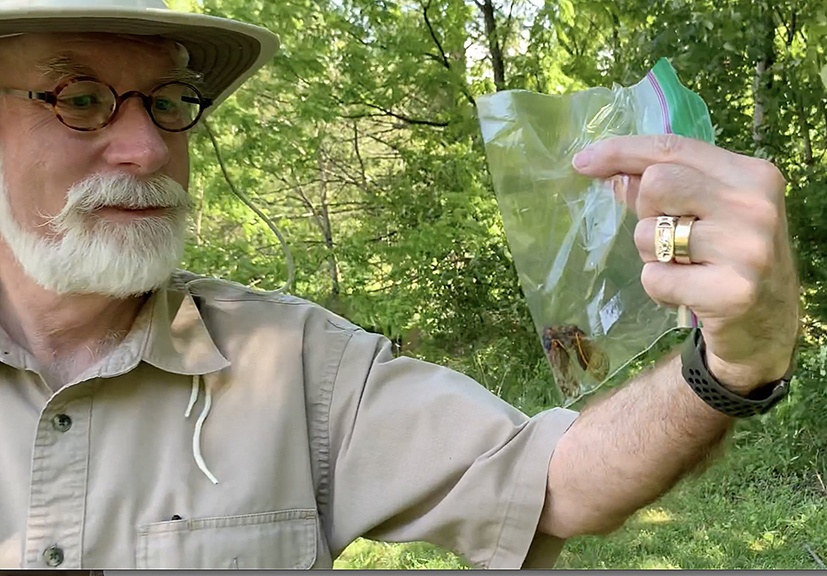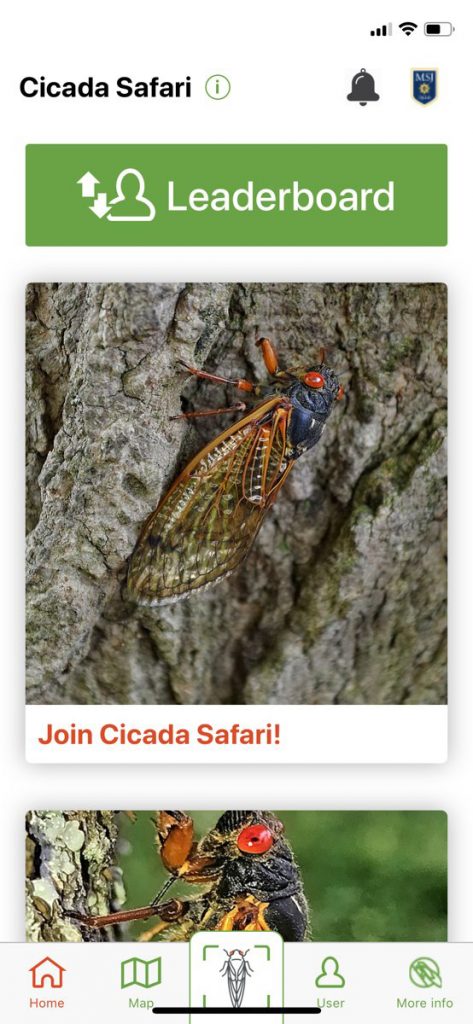
WASHINGTON. That loud buzzing and clicking sound across 15 states, including Tennessee, and the District of Columbia this spring – from the emergence of billions of Brood X cicadas – is music to the ears of a Catholic university professor and entomologist.
Gene Kritsky, described as the Indiana Jones of the cicada world, is the dean of behavioral and natural sciences and a biology professor at Mount St. Joseph University in Cincinnati.
As a cicada guru, it would seem he knows all there is to know about these creatures that began tunneling their way out of the ground – on his watch as of May 18 – but he wants to learn more and he wants the public’s help.
He has written a book specifically about Brood X – pronounced “brood 10” because the cicada broods are labeled by Roman numerals – and has written numerous academic articles on cicadas and given more interviews on the 17-year reappearing bugs than he can count.

Kritsky, who began teaching at Mount St. Joseph in 1983, is currently the longest serving faculty member at the university. And although he knows a lot about bugs, and cicadas in particular, he wants to gather all the information he can about the creatures who will be around for only about six weeks.
To do this, he is enlisting the general public’s help in mapping and tracking Brood X with an app he developed with the help of the university’s IT team called cicada safari. As of May 19, more than 136,000 had downloaded the app, and that was just at the edge of the cicadas’ emergence. App users are encouraged to send in photos or videos of cicadas, which will help determine their locations and overall status.
“This is true citizen science,” he said.
It’s akin to the help he sought from the public in 1987 when he set up a hotline for people to call in their cicada observations and got so many messages it broke his answering machine. In 2004, his email inbox filled with cicada reports, but this year with smartphones and GPS, it’s a whole new ballgame.
Kritsky first started tracking cicadas in 1976 when he was in graduate school – Brood XXIII.
He collected fossils and insects as a kid. When he was a teenager, he met the well-known anthropologist Margaret Mead at a lecture and took to heart the advice she gave him: to write and take pictures for the public.
He has written a lot about cicadas and his other love, bees, and has taken plenty of photographs. Currently, he is a cicada ambassador of sorts for a nation that is not sure what to make of these creatures with the loud male mating songs and the exoskeletons of males and females that crunch underfoot.
He is not alone in his expertise, noting that there are a “handful of us” who write and teach about cicadas. “We’re all good friends. We all overlap in our love of cicadas.”
He spoke to Catholic News Service May 19 after spending the morning at a local high school, talking about cicadas (which he doesn’t do often but it was for a friend) and between other interviews. All the time spent talking about these winged, red-eyed creatures could get draining, but he does not give that impression.
“I’m a teacher at heart. I’ve been teaching almost 41 years now,” he said, calling the current fascination with cicadas “a teaching moment to get people interested in bug history, natural history and culture” – a crossover he finds fascinating.
He describes this current batch of Brood X cicadas as the great grandkids to the first group of this brood he studied 34 years ago.
He also likes to point out that this particular brood made its first known appearance in Philadelphia in 1715 at the Gloria Dei Swedish Lutheran Church, which is now an Episcopal church. The pastor at the time wrote an entry in his journal describing these bugs.
Kritsky hopes some people get to that church this year in tribute to what he called the Brood X mothership.
And if that’s the mothership, then the campus of Mount St. Joseph, founded by the Sisters of Charity of Cincinnati, is almost the Cicada Hall of Fame. There are cicadas all over campus, Kritsky said, not talking about the emerging bugs but artwork, huge photographs and a mural. On April Fool’s Day this year, he and other school officials claimed they were making the cicada the school mascot, replacing the lion.
Attention to the university’s cicada study goes along with the school’s mission to be a beacon, Kritsky said. Although he is not Catholic, he said the focus on cicadas’ existence being threatened by destruction of forests goes right along with what Pope Francis talks about in his emphasis on care for the environment.
Currently, some cicada broods are going extinct, he said, noting that there are now 15 different broods: 12 which appear every 17 years and three which appear every 13 years. Some years these overlap, which is expected in 2024 after two years of no cicadas emerging.
The 2022-2023 window is when Kritsky might get to take a vacation with his wife of 20 years, who also shares his love for bugs and designs silver insect jewelry.
This year, as part of the cicada buzz, some people are talking about eating these bugs, saying they taste like shrimp or asparagus. Kritsky, who tried one in 1987, won’t do that again because as he put it: “They are slightly endangered and I got tenure because of cicadas.”
Not everyone shares his cicada love, but he encourages those who live in the region where these bugs will appear to go out and observe them, especially at night with a flashlight.
They don’t sting or bite and they are not locusts, which are grasshoppers, he said.
He also finds something comforting in the cicadas 17-year predictability, especially this year.
“We don’t know when the pandemic will end,” he said, “but we know when Brood X will appear.”
Editor’s Note: More information can be found at cicadasafari.org.









